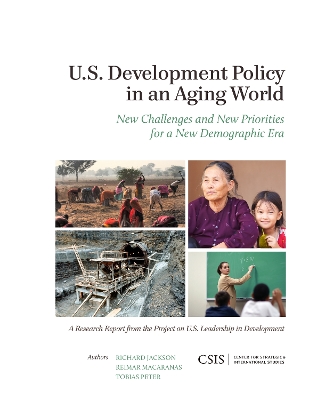CSIS Reports
3 total works
The Global Aging Preparedness Index
by Richard Jackson, Neil Howe, and Tobias Peter
Published 12 December 2013
The world stands on the threshold of a stunning demographic transformation. Over the next few decades, global aging will affect everything from the shape of the family to the shape of the geopolitical order. Perhaps most fatefully, it could throw into question the ability of societies to provide a decent standard of living for the old without imposing a crushing burden on the young. Which countries are most prepared to meet the challenge? And which countries are least prepared? CSIS's Global Aging Preparedness Index, now available in a second thoroughly updated edition, provides the only comprehensive quantitative assessment of the progress that countries worldwide are making in preparing for global aging, and especially the old-age dependency dimension of the challenge.
U.S. Development Policy in an Aging World
by Richard Jackson, Reimar Macaranas, and Tobias Peter
Published 1 January 2013
The demographic transformation sweeping the emerging world has profound implications for U.S. development policy. The challenge is no longer helping countries overcome the obstacles to development posed by high birthrates and rapid population growth, but leveraging the opportunities created by falling birthrates and slowing population growth. This report discusses how developing countries can best leverage their "demographic dividends" in order to boost income and wealth while they are still young and growing, as well as how they can prepare for the inevitable aging of their populations that looms just over the horizon. It also explores what the emerging new demographic realities imply for the optimal shape of U.S. development policy in decades to come.
The unsustainable federal budget outlook will inevitably push entitlement reform to the forefront of the national policy debate. As America's leaders consider reform options, they will have much to learn from the experience of other developed countries, several of which have recently enacted far-reaching overhauls of their state pension systems that greatly reduce the long-term fiscal burden of their aging populations. "Lessons from Abroad for the U.S. Entitlement Debate" places America's aging challenge in international perspective, examines the most promising reform initiatives in nine other developed countries, and draws practical lessons for U.S. policymakers.


